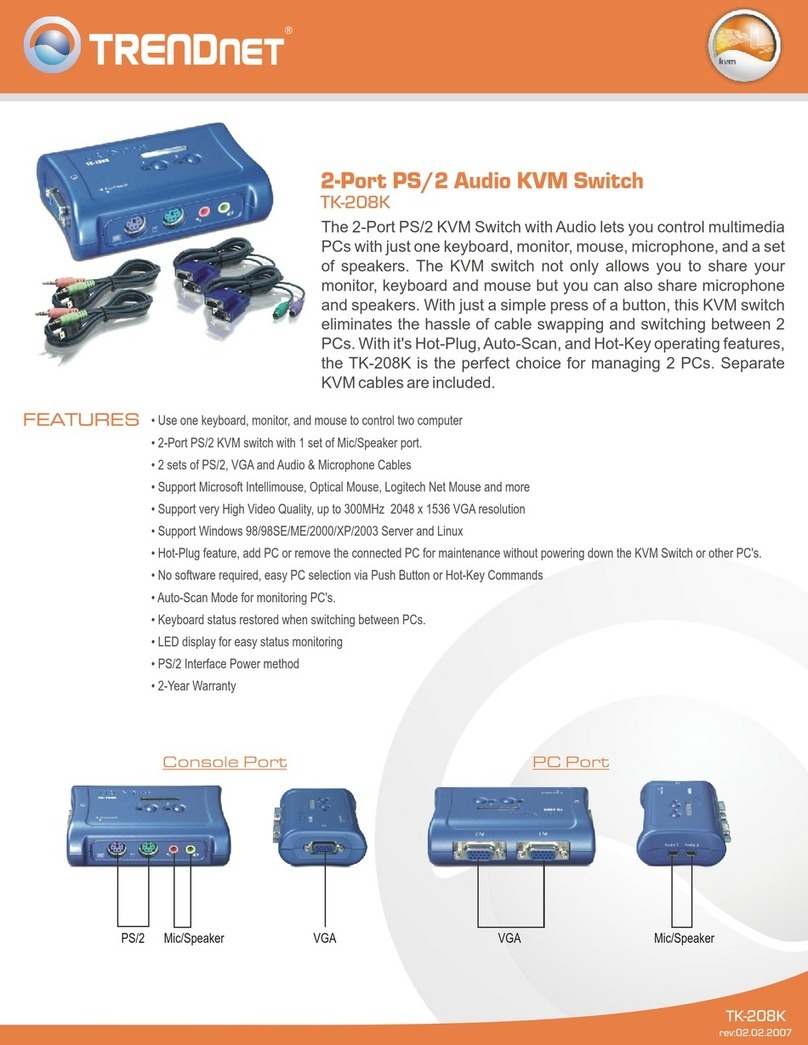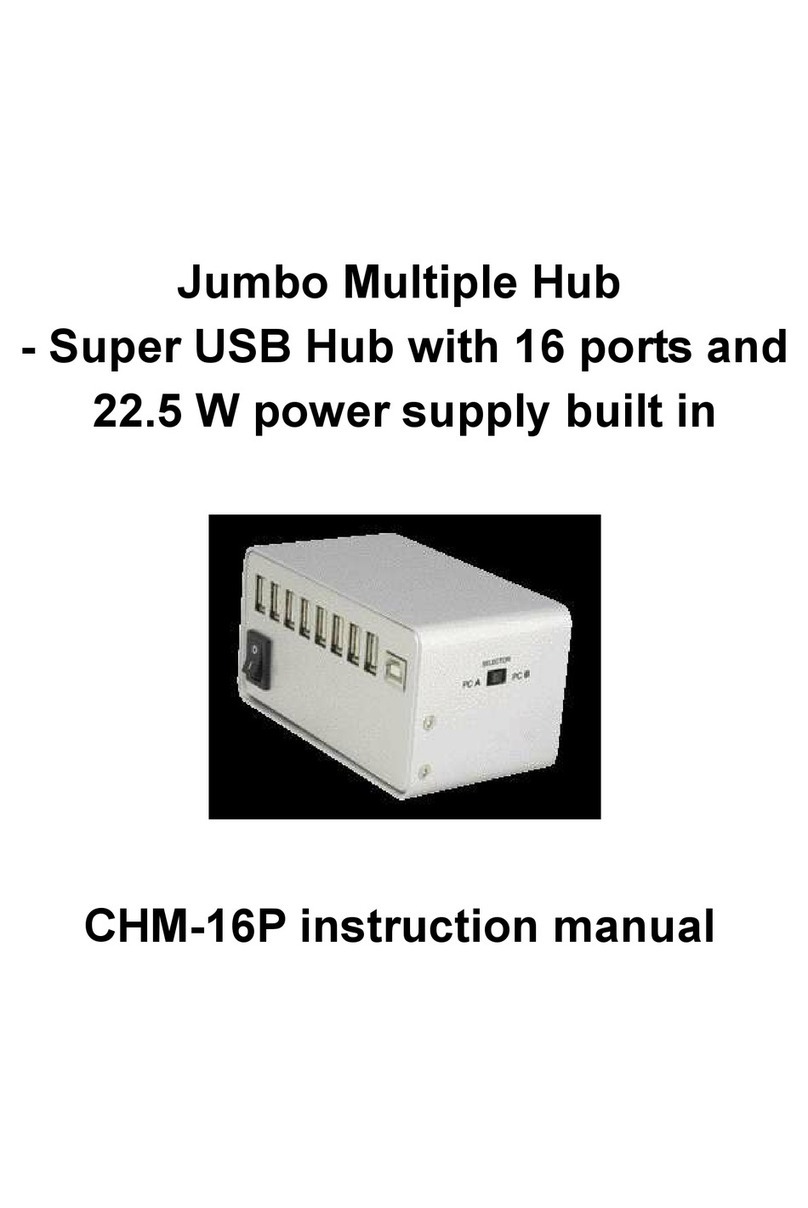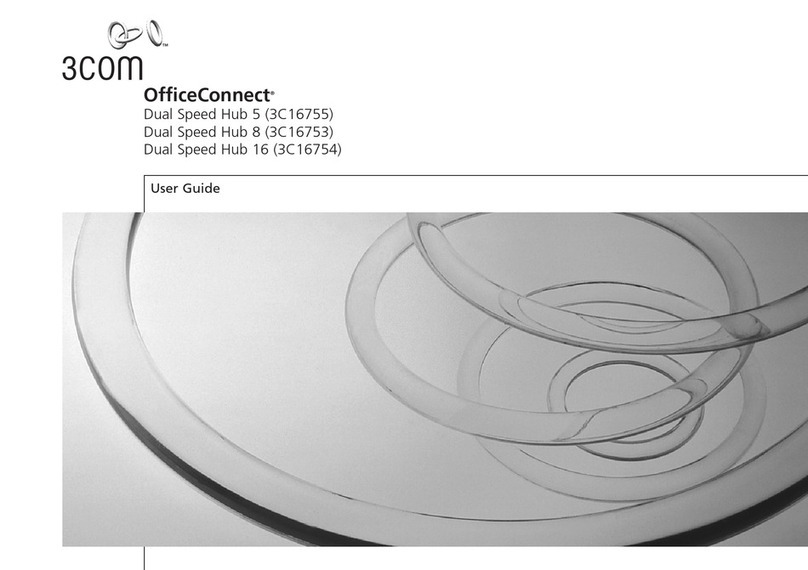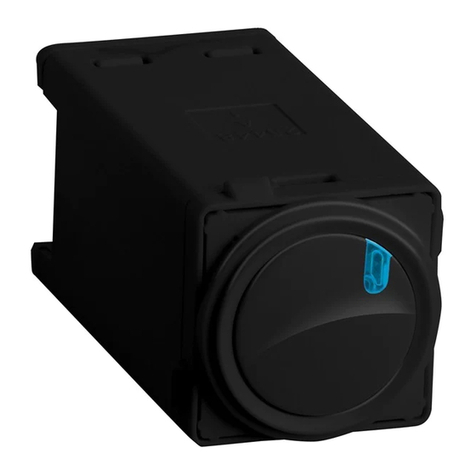ROH 190 Series Installation guide

www.SteamPoweredRadio.Com
WARRANTY
All
ROH
Corporation products
are
guaranteed
against
defects
in
material
and
workmanship. This warranty
applies
for
one
year
from
the
date
of
delivery
to
the
original
purchaser.
We
will
repair
or
replace,
at
out
option,
products which prove to
be
de-
fective
during
the
warranty period provided they
are
returned
to
the
factory.
Products
returned
for
warranty
repair
will
be
ser-
viced
and
shipped within 2 working days. Customers
may
repair
and
calibrate
equipment without voiding
the
guarantee,
provided the
service
is
performed in a workmanlike manner.
ROH
Corporation
will
supply
parts
free
of
charge
to
those customers
who
elect
to
repair
equipment
that
is
under warranty. This warranty
is
in
lie
u
of
all
other
warranties,
expressed
or
implied,
and
constitutes
fulfillment
of
all
our
liabilities
to
the
purchaser.
We
assume
no
liability
in
any
event,
for
consequential
or
incidental
damages
incurred
by
the purchaser in connection with products covered under
this
warranty.
ROH
CORPORATION
107
TECHNOLOGY
PARK
NORCROSS,
GA
30092
(404)449-0873

www.SteamPoweredRadio.Com
TABLE
OF
(
ONTENTS
SECTION
I
GENERAL
INFORMATION
AND
SPECIFICATIONS
Product Brochure
II
INSTALLATION
2.1 Inspection
2.2
Power
Requirements
2.3 Grounding Requirements
2.4
Installation
III
OPERATING
INSTRUCTIONS
3.1 General Operating Information
IV
TECHNICAL
DESCRIPTION
4.1 Block
Diagram
Description
V
MAINTENANCE
FIGURE
3
.1.1
3.1. 2
3.1.
3
4.1.1
5.1. 1
5. 2
.1
5. 3
.1
5.4.1
5.
5. 1
5.
6. 1
5.
7
.1
5.7.2
5.1 Meter Assembly
5.2
Power
Supply
Module
5.3
Audio
Driver/Receiver
Module
5.4 Crosspoint Switch
Module
5.5
Tally
Module
5.6 Chassis
5.7
Interconnect
Wiring
LIST
OF
ILLUSTRATIONS
DESCRIPTION
Front
and
Rear Panel Controls
and
Connectors
Remote
Control Connector
Model
190
Input Expander Wiring
Diagram
Model
190
Block
Diagram
Meter Assembly Schematic
Power
Supply
Module
Schematic
Audio
Driver/Receiver
Module
Schematic
Crosspoint Switch
Module
Schematic
Tally
Module
Schematic
Top
View
of Chassis
Model
190
Interconnect
Wiring
Diagram
Model
190
Power
Supply Wiring
Diagram

www.SteamPoweredRadio.Com
•
•
~
Bridging Switcher/Line Monitor
Model 190
•• I l2 I3 I4 I5 I6 I7 I8 I9 f
10
f
11
f
12
1
13
1
14
1
15
1
The
Model
190
is
designed to fulfi
II
the functions
of
both
an
audio
bridging
switcher and a
multiple
input
line
monitor
.The unit may
be
used
to expand the
number
of
inputs
for
existing
equipment
and/
or
determine
the signal level and
quality
of
critical audio circuits. The several versions
of
the
Model
190
provide
single,
dual
channel,
or
stereo operation. The
single channel units incorporate a
monitor
speaker and VU meter. The
dual channel and stereo units have a
VU
meter for each channel and
an
amplifier
output
for
driving
external
monitor
speakers. The
input
channel
selection
is
obtained
with
momentary
or
alternate action illuminated
pushbutton switches. A
choice
of
eight
or
sixteen imputs are provided on
the standard models and may be remote
controlled
using
an
external DC
control signal. The
number
of
inputs may
be
increased in increments
of
16
to meet larger system requirements. Electrical specifications meet or
exceed
commercial
broadcast requirements. Each unit
is
completely
self-contained and operates from
11
5/230 Vac, 50
or
60
Hz
line power.
11
11
11
11
11
llnll
roH corPoraT1on
./_~'Y
1'11rr,7
no
fc
ross.
Ga
30011
/d
-/o
-fO
(404)~
II
11111111
II
101
Tee11not0Gt
Pai
K,aTtanTe
lf
313
/u,
€""..
Ex
fv~s~w(J. /
A+
I
IL.
h 3 ° s
<f
0
939-262-7..

www.SteamPoweredRadio.Com
Model 191
·• ·I,1,I·1,t,1,1,I·I•I
··
I·1,,
,.
1
,,
1•I•·
Model
192
, 193
BAL
SW
Inputs 5 through 8
or
16 not shown
Technical Description
The
Model
190can select from any number
of
inputs and offers
both
monitor
functions and a balanced
line
output. Input
selection
is
achieved
with
illuminated pushbutton switches,
which
provide a DC control voltage to actuate solid state
crosspoint switc
hes.
Each
balanced bridging
input
is
isolated
and
actively
mixed
to
pre,
·e
nt
crosstalk
or
signal loss
as
additional inputs are selected.
The switch bus
mixing
amplifiers drive the line and
monitor
amplifiers through separate level controls. The line
amplifier
provides 30 dB
of
gain and a balanced transformer output. The
monitor
amplifier provides 40 dB
of
gain and the
output
is
connected through jacks
which
interrupt the speaker operation
when phones are used. Both the line and speaker
amplifier
outputs and an auxiliary
input
are available on the rear panel.
Metering
of
eitherthe
input
or
output
Iine level
is
selected
with
a
front panel switch. The meter
circuitry
incorporates
an
amplifier
to offer adjustable sensitivity and response ballistics. The input
sensitivity
is
selected in 10 dB
steps
by interlocked front panel
switches. The calibration
is
adjustable over a 10 dB range to
indicate 0 VU for 0,
+4,
or
+8
dBm line levels. The meter
response
ca
n
be
switched to provide standard VU ballistics
or
a
fast, accurate peak responding indication.
Alternate action pushbutton switches are standard. Momentary
action, electrically interlocked switching,
is
available
with
the
optional tally circuitry. The
tally
is
compatible
with
the
input
expander accessory or the remote DC control option. The
remote control
of
switching and tally
circuitry
is
TTL logic
compatable
.
Pushbutton
switch
legend
is
engraved
and
supplied
to
the customer's specifications.
All
circuitry
is
powered
with
a
multiple
output
regulated
power
supply
which
will
operate from 115
or
230 Vac ±10%, 50 or 60
Hz
. The
power
supply
is
fully
protected from
an
output short
circuit
or
overload condition.
•
•

www.SteamPoweredRadio.Com
•
•
Specifications
Gain:
Input Impedance:
30 dB line
amplifier
40 dB
monitor
amplifier
1
Ok
ohms balanced bridging
40 dB CMR at 60
Hz
+20 dBm
maximum
common
mode input
Switch Attenuation & Crosstalk:
?:
70 dB at 10
kHz
Line
Output:
Line
Output
Level:
600 ohms balanced
+30 dBm, 50
Hz
to 20
kHz
+24 dBm, 30
Hz
to 20
kHz
Speaker/Headset
Output:
4-600
ohms unbalanced
Power
Output:
10 watts into 4 ohms, 20
Hz
to 20
kHz
Frequency Response: ±
.5
dB
maximum
deviation from specified
bandwidth
at rated
output
Distortion,
THD
or
IM:
-50
dB,
1/3%
maximum
at
rated output
Noise:
Meter Range:
Meter Calibration:
Meter Accuracy:
Meter Response:
Meter Balistics:
85 dB
SIN
ratio,
-65
dBm residual at 20 dB gain
-20 to +20 dB in 10 dB
steps
0,
+4
or
+8
dBm
for 0
VU
indication
±
3%
of
reading and ±
2%
of
range
20
Hz
to 20
kHz
±.5
dB
Standard
VU
or
Peak
Responding
Ambient Temperature: 0° to +50° C operating range
Power Requirement: 115/230 Vac,
±10%,
50
to
60 Hz, 50 watts
5.25"
H x
19"
W x
15"
D
Size:
Weight:
15
lbs.
Model Number and Name
Model
191
-08
Model
191
-16
Model 192-08
Model 192-16
Model 193-08
Options
01
02
03
04
05
8 Input
Audio
Switcher,
mono
16 Input
Audio
Switcher,
mono
8 Input
Audio
Switcher, stereo
16 Input
Audio
Switcher, stereo
8 Input
Audio
Switcher, dual channel
mono
Remote Control
of
Input
Switching
Tally Interlocked Switching for 8 Input Models
Tally Interlocked Switching for 16 Input Models
16 Switch
Input
Expander,
mono
16 Switch Input Expander, stereo

www.SteamPoweredRadio.Com
SECTION
II
INSTALLATION
2.1
INSPECTION
This instrument
was
carefully
inspected both mechanically
and
electrically
before shipment.
It
should
be
physically
free
of
mars
or
scratches
and
in
perfect
electrical
order
upon
receipt.
To
confirm
this,
the instrument should
be
inspected for physical
damage
in
transit,
and
checked to
verify
electrical
operation.
Al
material
in the
container
should
be
checked
against
the
enclosed packing
list.
The
manufacturer
will
not
be
responsible
for
shortages
against
the packing
sheet
unless
notified
immediately.
If
the instrument
fails
to operate
properly,
or
is
damaged
in
any
way,
a claim should
be
filed
with the
carrier.
A
full
report
of the
damage
should
be
filed
by
the claim agent,
and
this
report
should
be
forwarded
to
ROH
Corporation.
Upon
receipt
of
this
report,
you
will
be
advised of the
disposition
of the equipment
for
repair
or
replacement. Include the
model
number, type number,
and
serial
number
when
referring
to
this
instrument
for
any
reason.
2.2
POWER
REQUIREMENTS
2.3
2.4
The
Model
190
can
be
operated
from
an
AC
source
of
115
or
230
volts
(±
10
%
),
50
Hz
or
60
Hz.
Before the instrument
is
connected
to
a
power
source,
be
sure
that
the
slide
switch
(located
on
the
rear
panel) matches the voltage being
used.
The
power
requirement does not exceed
50
watts.
GROUNDING
REQUIREMENTS
To
protect
operating personnel, the National
Electrical
Manufacturers'
Association
(NEMA)
recommends
that
the instrument panel
and
cabinet
be
grounded.
This instrument
is
equipped with a
three-conductor
power
cable which,
when
plugged
into
an
appropriate
receptacle,
grounds the instrument.
The
offset
pin
on
the
power
cable
three-prong connector
is
the ground wire.
INSTALLATION
The
unit
is
designed
to
mount
in
an
EIA
standard
19
inch width rack. Mounting
screws with nylon washers have
been
provided
to
protect
the
front
panel
finish.
When
mounted
in a
rack,
additional
support
at
the
rear
of
the instrument should
be
provided
if
vibration
on
similar
stress
is
likely
to
be
encountered.
The
chassis
and
power
supply
common
are
grounded
at
the
line
cord
receptacle
which
is
suitable
to
remove
an
electrical
shock hazard; however,
when
an
additional
system ground
is
employed,
chassis
ground
terminals
should
be
used.
The
Model
190
has
low
power
consumption,
and
no
special
cooling
is
required.
However,
the
unit
should not
be
operated where the ambient temperature exceeds 50°c (122°F).

www.SteamPoweredRadio.Com
3. 1
SECTION
III
OPERATING
INSTRUCTIONS
GENERAL
OPERATING
INFORMATION
The
190
series
instruments
are
intended
for
use as audio
QC
monitors or signal
routing
switchers.
Available options
for
the
unit
will
further
increase the
instruments'
application.
Figure
3.1.1
illustrates
the
front
and
rear
panel
controls,
connectors,
and
indicators
and
the
keyed
items
are
identified
and
described in the accompanying
list.
The
remote control
of
an
input
circuit
requires
that
the
appropriate
control
1ine
be
connected
to
ground.
If
the
unit
also
incorporates
the optional
tally
circuit,
a
momentary
contact
closure
or negative
transition
pulse can provide
the control function.
The
input
control
line
is
normally
at
a 5
Vdc
leve1
and
has
a 1
mA
current
sink requirement
when
connected
to
a ground
return.
The
1amp
output
for
each
input
switch
circuit
is
also
available
at
the connector
and
located immediately below the corresponding input
terminal.
The
output
voltage swing
is
between -15
and
Oto
+10
Vdc
depending
on
the
lamp
load.
Remote
switch
lamps
should
be
type
387
and
the
common
lamp
terminals should
be
connected to the
15
Vdc
binding
post.
Figure
3.1.2
identifies
the input
connector
contact
positions
used
for
the remote control
option.
The
optional expander accessory
may
be
used
to
increase
the
number
of inputs
in increments
of
16
to meet
larger
system requirements. Figure
3.1.3
shows
how
the
interconnect
wiring between the expander
and
the
main
unit
is
accomplished.
The
expander
contains
additional
crosspoint
switch modules
and
an
optional
tally
module. Operating
power
and
audio
amplification
are
provided
by
the
main
unit.
Operation
and
electrical
specifications
are
otherwise
unchanged
from
the
Model
190.
The
peak level the
input
switches can block
is
+30
dBm,
therefore
the
maximum
operating input level should
be
limited
to approximately
+20
dBm.
The
output
should
be
given the
same
consideration,
since
the
line
amplifier
will
clip
beyond
a
+30
dBm
output
level.

www.SteamPoweredRadio.Com
1.
Meter:
Indicates
the level
of
an
input or output
signal.
2.
Meter:
Indicates
the level
of
an
input or output
signal.
This meter
is
provided
on
the
Model
192
stereo
unit
and
the
Model
193
dual channel
unit.
The
Model
191
mono
unit
provides
an
internal
speaker in
this
location.
3.
Zero
Adjust: Mechanical zero adjustment for t
he
meter.
4.
Channel
Select
Switches: Input channel
selection
provided
by
illumin-
ated pushbutton switches.
5.
Line Level:
The
output level adjustment
for
the l i
ne
amplifier.
6. Monitor Level:
The
output level adjustment
for
the monitor
amplifier.
7. Input/Output:
Selects
either
the
line
input or output
for
display
on
meter(s) .
8.
RMS/Peak:
Selects
either
the
VU
or
peak
response
for
the meter.
9.
Range:
Selects
operating range
for
the meter
from
-20
dB
to
+20
dB
in
10
dB
increments.
10.
Phone
: Jack permits signal monitoring using headphones . Speaker
operation
is
interrupted
when
phones
are
in use.
11.
Phone
: Jack permits signal monitoring using headphones , of channel
2
for
the
Model
193
dual channel
unit.
12.
AC
Breaker:
Circuit
breaker provides overload
protection
for
the
unit
.
13
. Voltage Switch:
Slide
switch
selects
115
V or
230
V
AC
power
.
14
.
Red
Binding Post: Provides
+15
Vdc
power
for
the expander
unit.
15
. Black Binding Post: Provides -15
Vdc
power
for
the expander
unit.
16.
Green
Binding Post: Provides a
power
supply ground
for
the expander
unit
.
17.
AC
Receptacle: Accepts grounded
AC
power
input to the
unit
.
18.
EXP:
Allows
an
additional
input
line
or
the
addition
of
an
input
expander
unit.
19.
TY:
Extends the
tally
clear
bus
to
an
expander
unit
.
20.
MON:
Monitor
amplifier
output
for
use with
external
speakers,Note:
21.
The
jumper
from
amplifier
output terminal
(H)
to
internal
speaker
ter-
minal (S) can
be
opened
to
mute
the
internal
speaker.
LINE
: Output connection
to
the
line
amplifier.
22.
INPUT:
Input connections
for
the signal inputs
to
the instrument.
23.
Ground
Terminals: Chassis ground
for
input
and
output cable
shields.

www.SteamPoweredRadio.Com
:--_
'
...
r
FRONT
AND
REAR
PANEL CONTROLS AND CONNECTORS
I 2 3
BREAKER
AC PLUG
l
4
CHI
5 6 7 8 9 10
·
FRONT
VIEW
..
.
\
j
I
INPUT
OUTPUT
INPUT
•
EXPTYMON LINE i 2 3 4 5 1 6 7 8
-LHCSHLLH-
-LHLHLHLHL~LHLHL~-
~000u000
__
000000000~000000_
® © © © ®
' ©
INPUT
OUTPUT
INPUT
EXP
TY
MON
LINE
I 2 3 4 5 6
7
8
LHCSHLLH
CH2
lJ000
_u
000d
LHLHLHLHLlilLHLHLH
-000000000~000000-
©
@)
©
@)
© ©
REAR
VIEW
I
FIGURE
3.1.1
12
13
14
15 16
INPUT
9
10
I I
12
13 14
15
16
LHLHLHLHLHLHLHLH
0000000000000000
INPUT
9
10
11
12
13
14
15
16
-LHLHLHLHLHLHLHLH-
0000000000000000
I

www.SteamPoweredRadio.Com
REMOTE
CONTROL
CONNECTOR
16----------
25 23
2 I I 9 I 7 I 5 I 3 I I 9 7 5 3 I
uuuuuuuuuuuuuuuuuuuuuuuuu
nnnnnnnnnnnnnnnnnnnnnnnnn
50
48
46 44
42
40
38
36
34
32
30
28 26
16--
--------
INPUT CONTROL
LAMP
POWER
NOTE:
CONNECTOR
TERMINAL
NUMBERS
CORRESPOND RESPECTIVELY
WITH
THE
INPUT
SWITCH
NUMBER
.
FIGURE
3.1.2

www.SteamPoweredRadio.Com
MODEL
190
INPUT
EXPANDER
WIRING
DIA\iRAM
BREAKER
®
VOLTAGE
SWITCH
~
BLK
AC
PLUG
GRN RED
INPUT
OUTPUT
EXP
TY
MONITOR
LI
NE
LHCSHLLH
cH
I
CE
1010
!e
0 0 0 0 0 1+' 1-
INPU
T
OUTPUT
EXP
TY
MONITOR
LINE
LHCSHLLH
CH2
m;g e e
le
0 0 0 0
r+
,_
INPUT
OUTPUT
DCG
DCTY
CHI
CH2
-v'
+ C L H H L
S 0 0 0 e
10101e
1e
~
MODEL
190
B OR
16
INPUT
EXPANDER
FIGURE
3.1.3

www.SteamPoweredRadio.Com
4.
l
BLOCK
DIAGRAM
DESCRIPTION
Input channel
selection
is
achieved with
alternate
action
illuminated
pushbutton switches located
on
the
front
panel,
which
provide a
DC
con-
trol
voltage to the
crosspoint
switch
module
or
tally
module.
DC
con-
trol
of
input switching can
also
be
provided
from
an
additional
location
using the optional remote control input.
Use
of the optional
tally
module
provides a
logic
interface
between the input switches or remote
inputs
and
the
crosspoint
switch
module
and
provides
momentary
action,
electrically
interlocked
switching.
At
the
crosspoint
switch
module
the
DC
control voltage actuages a
solid
state
crosspoint
switch
which
selects
the
appropriate
audio input
line.
In
addition,
a
DC
voltage
is
generated
on
the
crosspoint
switch
module
in response
to
the
DC
control
voltage
and
illuminates
the corresponding
input
channel
selector
button
on
the
front
panel.
From
the
crosspoint
switch
module
the
selected
in-
put
is
connected to a
pair
of
unity
gain
summing
amplifiers
located
on
the audio
driver/receiver
module.
The
output of the
summing
amplifiers
feed a
unity
gain
differential
amplifier.
The
differential
amplifier
provides a high
common
mode
rejection
capability
for
each of the input
circuits
.
The
output
of
the
differential
amplifier
drives
the
line
and
monitor
amplifiers
through
separate
level
controls
located
on
the
front
panel.
The
line
amplifier
provides
Oto
30
dB
of
gain
and
a balanced
transformer output
to
a connector located
on
the
rear
panel .
The
moni-
tor
amplifier
provides
Oto
40
dB
of
gain
to
an
external
speaker connec-
tion
located
on
a
rear
panel connector.
On
the
Model
191
this
output
connection
is
normally used
to
drive
the
internal
speaker located
at
the
front
panel.
In
addition
a
phone
jack
is
located
on
the
front
panel
which
interrupts
speaker operation
when
headphones
are
used.
An
auxiliary
input
to the
summing
amplifiers
is
located
on
a
rear
panel connector.
The
front
panel meter can
be
switched
to
monitor
either
the input or output signal
with a
front
panel pushbutton switch.
The
selected
signal
is
monitored
by
the
front
panel meter with
sensitivity
ranges
selected
using a
five
button
interlocked
gang
switch.
The
meter switching
also
allows
selec-
tion
of
either
peak or
VU
readings. A potentiometer located
on
the meter
board
offers
meter
calibration
over a
Oto
+10
dBm
range. Detailed sche-
matics
and
specific
explanations
of
the individual
circuits
are
contained
in
section
V.

www.SteamPoweredRadio.Com
2
......
8
INPUT
LINE
I
INPUT
LINE
2
INPUT
LINE
8
REMOTE
PANEL
INPUT
SWITCH
15
CROSSPOINT
SWITCH
1903
TALLY
1904
MODEL
190
BLO
~ K
DIAGRAM
CLEAR
BUS
1-8
CLEAR
BUS
9-16
t
I
SWITCH-
FROM
{
BOARD
LINES
t9 -
16
f
I
I
d
FIGURE
4.1.1
-
AUDIO DRIVER/RECEIVER
1902
METER
ASSEMBLY
1001
I_
SPEAKER
\
PHONE
MONITOR OUTPUT
LINE
OUTPUT
i-------tls=:::I

www.SteamPoweredRadio.Com
1001
METER
ASSEMBLY
TECHNICAL
DESCRIPTION
The
meter assembly includes the
amplifier
circuitry,
the meter
movement,
the meter
lamps
and
the
ganged
pushbutton panel switch.
The
amplifier
provides
up
to four
balanced bridging inputs
which
are
isolated
and
produce
nominal
line
loading.
The
number
of inputs used depends
on
the requirements of the instrument with
which
the
meter
is
associated.
The
inputs are
isolated
by
the
summing
ampli f
iers
UlA,B
which
combine
each side of the input
line.
The
differential
amplifier
UlD
converts the
balanced inputs to
an
unbalanced output to drive the range switch
and
remaining
circuitry.
Resistors
R16-20
in conjunction with the pushbutton range switch
form
a
step
attenuator
prior
to the
circuit
voltage
amplifier
section comprised of
UlC
and
U2A.
The
overall voltage gain
is
adjusted
by
the
calibration
potentiometer
R23
which
provides a
10
dB
variation
in
circuit
sensitiv
i
ty.
IC
amplifiers
U2D,C
drive
separate
full
wave
rectifier
circuits
for
the
RMS
and
peak
response functions.
The
meter
movement
is
switched between the
two
circuits
depending
on
the desired
response.
An
additional
amplifier
U2B
is
employed
to
accelerate
the meter pointer
travel in the
peak
response
mode
. Capacitor
C6
and
resistor
R38
and
the meter
coil
are enclosed in the feedback loop of
U2B
which
helps
overcome
the response delay
caused
by
the mechanical
inertia
of the meter
movement
.
PARTS
LIST
Item
Description
Part
Number
or
Type
Manufacturer
Cl,2
O.
l
uF
16
V cera
HY-450
Sprague
C3
0.001
uF
250
V cera
2SS-Dl0
Sprague
C4
l.
5
uF
50
V
7CZ5Ul55D8
Sprague
C5
33
uF
16
V
tant
T392D336K016AS
Kemet
C6
330
uF
6.3 V
T392F337K006AS
Kemet
D1-4
100
mA
50
V
Ge
1N270
ITT
-
I1,2
55
V 0.05 A
1835
Chicago Miniature
M Meter
13-1001
ROH
Rl-8,17 30.1 k
ohmi
1/4 W1%
RN55D
Allen Bradley
R9-14
10
k
ohms
1/4 W1%
RN55D
Allen Bradley
Rl5
100
ohms
1/4 W
5%
RCR07
Allen Bradley
R16
100
k
ohms
1/4 W1%
RN550
Allen Bradley
R18
9090
ohms
1/4 W
1%
RN55D
Allen Bradley
Rl9
2150
ohms
1/4 W
1%
RN55D
Allen Bradley
R20,21,26
1000
ohms
1/4 W1%
RN550
Allen Bradley
R22,27
11
k
ohms
1/4 W1%
RNSSD
Allen Bradley
R23,32
10
k
ohms
1/2 W
10
% 3389-103
Bourns
R24
2.4 k
ohms
1/4 W5%
RCR07
Allen Bradley
R25
51
k
ohms
1/4 W5%
RCR07
A
11
en
Bradley
R28
5.
1 k
ohms
1/4 W5%
RCR07
Allen Bradley
R29,30
24
k
ohms
1/4 W5%
RCR07
Allen Bradley
R31,33
7.5 k
ohms
1/4 W5%
RCR07
Allen Bradley
R34,35
10
k
ohms
1/4 W5%
RCR07
Allen Bradley
R36
l k
ohms
1/4 W
5%
RCR07
Allen Bradley
R37
l k
ohms
l/2
W
10%
3389-102
Bourns
R38
200
ohms
1/4 W1%
RN55D
Allen Bradley
Sl
4PDT
7
position
switch
PB15
CRL
Instrument -
Ul,2 Integrated
Circuit
TL075CN
or
RC4136N
Texas

www.SteamPoweredRadio.Com
1001
METER
ASSEMBLY
CALIBRATION
PROCEDURE
Meter
Zero
Adjustment:
For
maximum
accuracy, the meter mechanical zero should
be
checked
periodically.
The
meter
is
properly
zero-set
when
the
pointer
rests
over the zero
calibration
mark
and
the
unit
is
in
its
normal
operating environ-
ment
and
is
turned
off.
If
it
is
necessary to
reset
the
zero, proceed as follows:
Turn
the ac
power
off
and
wait
one
minute
for
all
capacitors
to discharge. Rotate
the zero adjustment screw clockwise so
that
the
pointer
is
left
of zero
and
moving
upscale. Continue to
rotate
screw clockwise
until
the
pointer
is
exactly
at
zero.
Calibration
Adjustment: Potentiometer
R23
located
at
the top edge of the meter
amplifier
board
is
used
to
calibrate
the meter assembly.
The
range of adjustment
will
accorm1odate
O,
+4,
and
+8
dBm
input
for
a O
dB
scale
indication.
A 1
kHz
test
frequency
of
certified
amplitude should
be
used
for
the
calibration
adjustment.
Peak
Response Adjustment: Potentiometer
R37
located immediately
below
the
calibra-
tion
potentiometer
adjusts
damping
of
the meter
movement
.
The
meter response
switch button should
be
in the
released
position.
Apply
a 1
kHz
test
frequency
to the instrument input
and
observe
the
pointer
deflection
.
The
meter
pointer
will advance
rapidly
to
the
O
dB
scale
mark
with a
minimum
of
overshoot.
The
damping
should
be
adjusted
at
the
O
dB
mark
with approximately
10
%
initial
overshoot.
The
return
to O
is
slow
and
requires
several seconds.
RMS(VU)
Tracking Adjustment:
The
remaining potentiometer
R32
on
the
circuit
board
adjusts
the
RMS
calibration
to
indicate
the
same
as the peak
when
the response
button
is
depressed.
With
a continuous input signal the meter
indication
should
not change
when
the response button
is
depressed or
released.
After the above
performance
is
obtained the
calibration
potentiometer will simultaneously provide
the
overall
calibration
adjustment
for
both response
functions.
This manual suits for next models
8
Popular Switch manuals by other brands
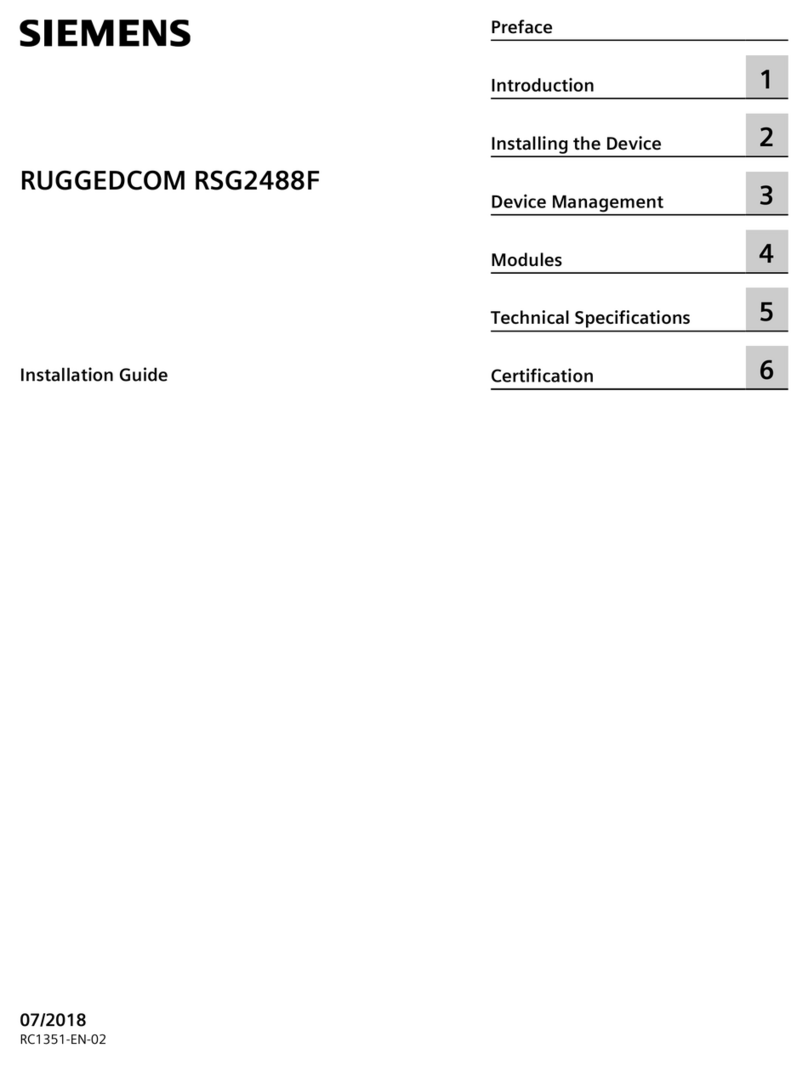
Siemens
Siemens SIMATIC NET RUGGEDCOM RSG2488F installation guide

Buffalo
Buffalo BS-POE-G21M-EU Brochure & specs

Kingston Technology
Kingston Technology EtheRx KNE8TX/WG user guide
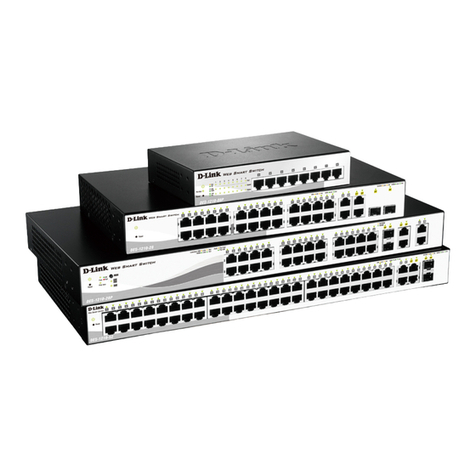
D-Link
D-Link DES-1210-08P reference guide

ConnectGear
ConnectGear USBH-004 user manual
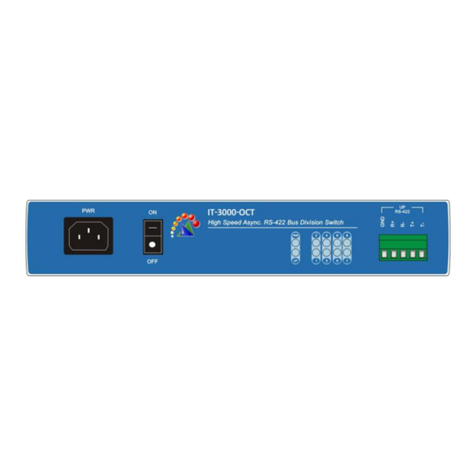
Intellisystem
Intellisystem IT-3000-OCT manual

Agilent Technologies
Agilent Technologies 81591B user guide
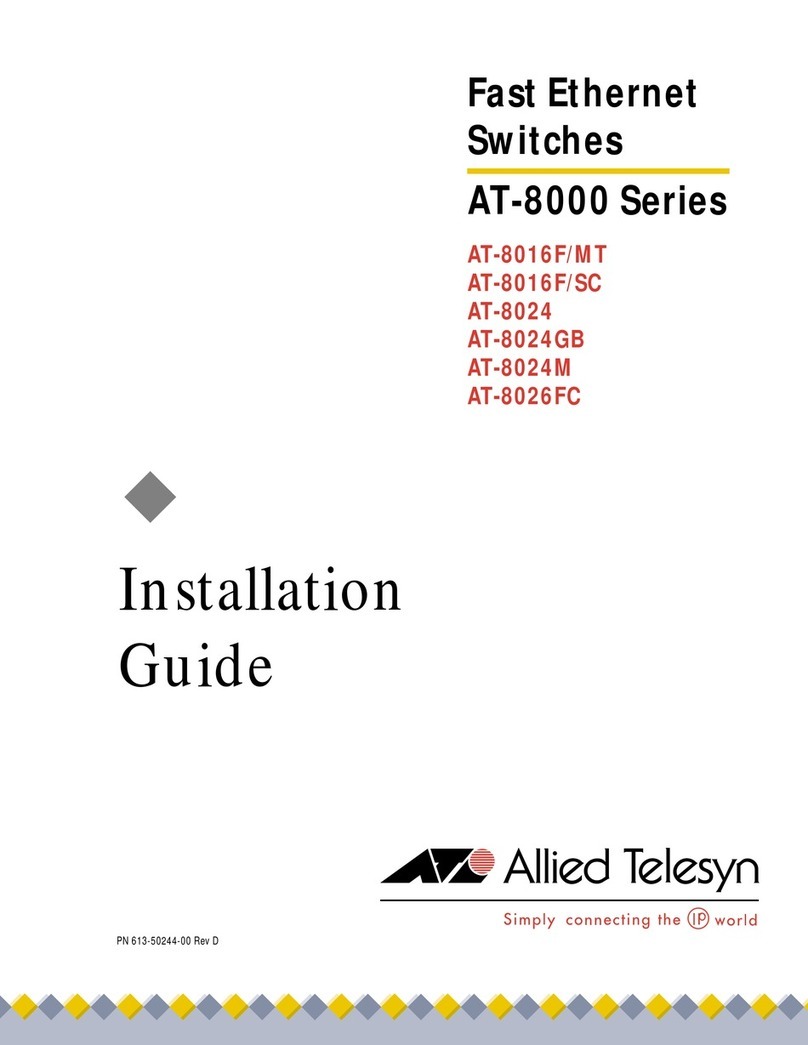
Allied Telesis
Allied Telesis AT-8016F/MT installation guide

Amer.com
Amer.com SR24n user guide

Torqueedo
Torqueedo 2304-00 operating manual
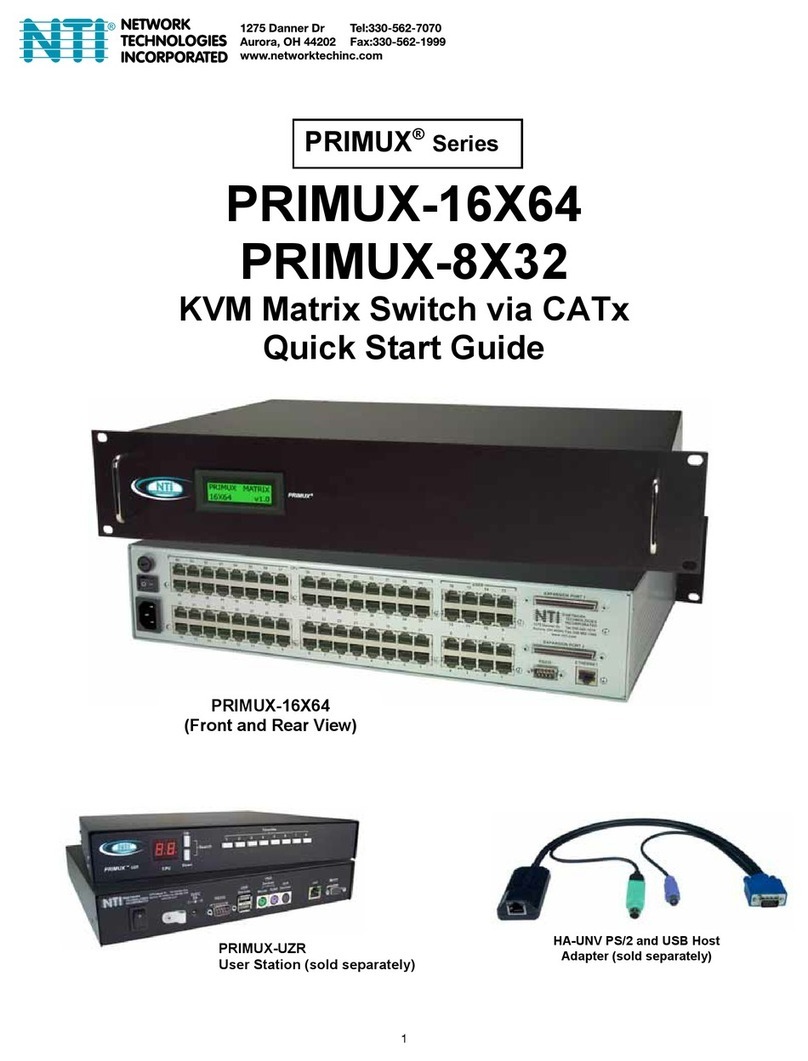
Network Technologies
Network Technologies PRIMUX-16X64 quick start guide
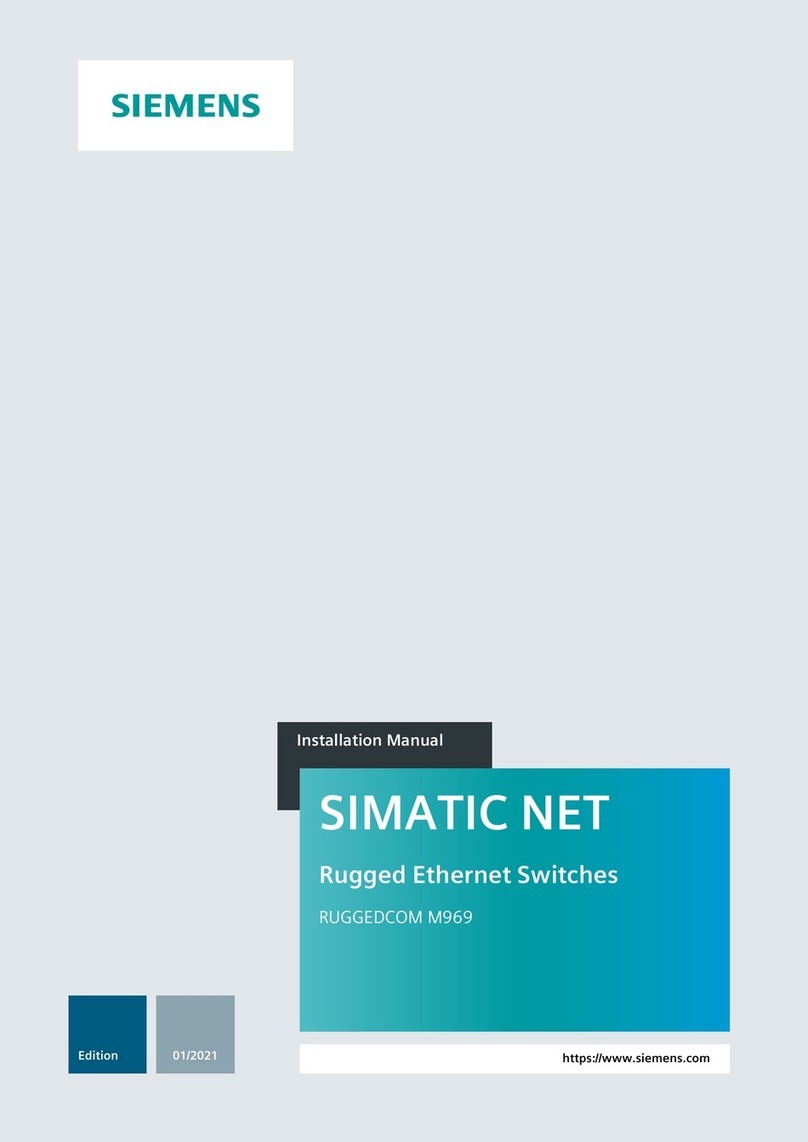
Siemens
Siemens SIMATIC NET RUGGEDCOM M969 installation manual





